Autel Robotics has officially revealed their long-awaited EVO Nano series at CES 2022, promising outstanding video capabilities in less than 250 grams (0.55lbs). That number is its selling point because anything under it doesn’t require FAA registration (if you are in the US). There is also a different, more permissive, flight zone regulation for this weight class. FirstQuadcopter is between the first independent drone blogs that publish an in-depth review of the Autel EVO Nano+ drone.
Back in 2019, DJI created its first folding drone that weighs less than 250 grams. Now, its MINI series has some serious rivals. First, it was FIMI, then followed by Hubsan, and now Autel Robotics. The fierce competition has already forced DJI’s hand to reduce their price in this weight segment. The DJI MINI SE is sold for only $299, which is amazing for what it offers.
Autel advertises the EVO Nano series to be ‘the first and only aircraft series of its size to offer an advanced obstacle avoidance system‘. To be fair, the Zino MINI Pro also has this kind of feature and it was released a few months earlier.
Key specifications
- Weights just 249 grams;
- Compact size with foldable arms;
- 4K HDR camera with 100 Mbps;
- 3-axis gimbal stabilization;
- Vision sensors for 3 direction obstacle avoidance;
- Active tracking (* will be released in a future firmware update);
- 160Mbps (20MB/s) wireless file transfer;
- 28-minute battery life (26 minutes hovering);
- 10km SkyLink video transmission (2.7K/1080P).
Review: The Autel EVO Nano+ is a solid DJI MINI alternative
Disclosure: We received this sub 250g Autel drone from RCGoing to test it and do an in-depth review. Although the product was offered for free, all opinions in this article remain our own, with no influence from our partners.
Initially, it was about receiving an EVO Nano with a premium bundle pack, but because of low stock, they sent me an EVO Nano+ standard kit with the following accessories: remote controller, USB Type-C charging cable, phone RC data cables (micro USB, Type-C, and Lightning), one set of spare propellers + screws, and user manual. In addition to these, the premium bundle kit includes a power adapter, multi-charger, 2 spare batteries, 2 extra sets of spare propellers, a propeller holder, and a shoulder bag.
Inside the box, the quality check label was filled in on December 30, so it was shipped almost from the production line :)
The EVO Nano series is available with 4 color options, I received the so-called Autel orange. With folded arms measures 142×94×55mm and has a net weight of 249 grams on the scale (including battery, propellers, and microSD card). Thanks to its ultra-compact size, it can be comfortably carried almost anywhere in your backpack or a dedicated case. Its tiny size also makes it quite discreet, making it perfect for capturing the beauty of nature while avoiding disturbing local wildlife.
On the back, under the battery bay, there is the USB Type-C charging port, rear status LED, and micro SD slot. In order to be as lightweight as possible, Autel opted for active cooling instead of an aluminum heat sink. There is a tiny radial fan on the center of the fuselage’s belly.
The EVO Nano Plus features a total of 6 computer vision sensors located on the front, rear, and, bottom for 3D obstacle avoidance. There is also an ultrasonic sensor located on the bottom of the drone for precision hovering.
Price, availability, and options
Both Autel EVO Nano+ Standard and Premium packs can be ordered from RCGoing with a starting price of $799.99. For now, they have only the iconic orange version, but soon will be available also Arctic White, Blazing Red, and Deep Space Gray. If you have a tighter budget you can also consider the Nano with 48MP camera for $649.99.
Autel Robotics offers for $79 premium care refresh plan (insurance) that covers water damage and flyaway. Remember that this service can be purchased within the first 48h after the drone was activated.
Autel EVO Nano+: Camera
For such a small drone, the EVO Nano Plus comes with a massive 1/1.28 inch CMOS sensor. It shoots 4K and RAW images, which makes it a very capable camera drone. Its advanced PDAF + CDAF autofocus system can track fast-moving subjects such as vehicles, people, and even animals. The F/1.9 low aperture lens help during low light, without adding too much ISO noise.
Enabling HDR mode, you can squeeze rich detail from shadows and highlights no matter how difficult the lighting condition is. ‘Defog’ mode allows getting a better image quality in rainy or haze environments.
While the EVO Nano+ is advertised with a 50 MP (8192×6144) resolution, I managed to take only 4096×302 (4:3) or 3840×2160 (16:9) photos. It is possible that the 50MP photo mode will be enabled in a future firmware update. It has four panorama modes: Spherical, Wide-angle, Landscape, and Vertical (Portrait).
Videos can be captured with 4K@30fps, 2.7K@30fps, or 1080p@60fps resolution. You can choose between H.264 and H.265 modes (100Mbps max bit rate). The camera provides up to 16x digital zoom, but this works only while recording.
The Autel EVO Nano+ has no internal storage but relies on an SD card which is more convenient as it’s removable and upgradable (up to 256GB is supported / UHS-3 rating required).
Camera specifications
| Image sensor | CMOS:1/1.28 inch Effective pixels:50MP Pixel size: 2.44μm*2.44μm (Bin2) |
| Lens | FOV: 85° Equivalent focal length: 23mm Aperture: f/1.9 Focus range: 0.5m ~ ∞ Focus mode::PDAF+CDAF/MF |
| Shooting mode | Automatic mode (P gear): EV adjustable, ISO/Shutter automatic Manual mode (M gear): ISO/Shutter adjustable, EV not adjustable Shutter priority (S file): Shutter/EV adjustable, ISO automatic |
| ISO range | Video: ISO100 ~ ISO6400 Photo: ISO100 ~ ISO6400 |
| Shutter speed | Photo Mode:1/8000 ~ 8s Other:1/8000 ~ 1/frame rates |
| Portrait blur | Real-time image transmission portrait blur and photo portrait blur |
| Zoom range | Digital zoom:1 ~ 16 times |
| Photo format | JPG(8-bit) / DNG(10-bit) / JPG+DNG |
| Photo resolutions | 50MP:8192×6144(4:3) 12.5MP:4096×3072(4:3) 4K:3840×2160(16:9) |
| Photo shooting mode | Single shot Burst shooting: 3/5 Auto exposure bracketing(AEB): 3/5 shots Interval: 2s/3s/4s/5s (default)/6s/…/60s (DNG minimum 5s) HDR imaging: 3840×2160 |
| Video coding format | H265/H264 |
| Video Resolution | 3840×2160 p30/25/24 2720×1528 p30/25/24 1920×1080 p60/50/48/30/25/24 HDR: 3840×2160 p30/25/24 2720×1528 p30/25/24 1920×1080 p60/50/48/30/25/24 |
| Max bitrate | 100Mbps |
| Timelapse | Original image:3840*2160,JPG/DNG Video:4K P25 |
| Panorama | Horizontal/Vertical/Wide-angle/Spherical Original image: 4096*3072, JPG/DNG |
| WiFi transfer | 20MB/s |
Cinematic shots are built into the Autel Nano+ drone in order to help you quickly produce Hollywood-style clips. Rocket, Fade Away, Orbit, and Flick are the four modes that are also offered by its bigger and almost twice more expensive brother the Autel EVO Lite. By comparison, DJI MINI 2’s QuickShoot modes include Dronie, Helix, Rocket, Circle, and Boomerang. The ‘Flick’ mode is different from anything else I tested before. It starts recording from the back of the subject and, making a 180° turn, it goes in front of the subject.
Autel EVO Nano: Battery life
The EVO Nano is powered by a 2250mAh smart battery with a rated voltage of 7.7V and discharging management functions. The battery pack weighs xx grams and it has 4 changing level indicator LEDs. When the battery’s temperature is lower than 10°C, it will be automatically heated up before take-off.
Officially, you’ll get 28 minutes of battery life in ideal conditions with no wind and optimal flight speed. In the real world, you can expect something around 22-24 minutes of flight time per charge. When it is cold and windy outside, flight time is around 20-22 minutes. The controller’s internal 3930mAh battery is rated for 2.5 hours and is used together with a smartphone. During my tests, it lasted easily for 3-4 full flights.
Speaking of battery life, its direct competitor – the Zino Mini Pro, is advertised with 40 minutes of flight time. During my review, I got 30 minutes of hovering time, about 6 minutes more than with the Autel EVO Nano+ having the same test conditions.
Autel EVO Nano: Remote controller and range
Initially, I found the Nano’s transmitter quite bulky, especially with that metal phone holder bracket. After a careful inspection, I found out that the top phone clamp doubles as the communications antenna.
The remote controller fits nicely in your hand and it has a good grip. On the front panel, in addition to the two control sticks, there are only 3 buttons (RTH, Power, and Pause) and a status LED bar. The RC has two USB Type-C ports, a bottom for charging and a top for phone data connection.
On the left side, there is a dial knob that allows changing the angle of the camera and an FN button that can be customized through the mobile APP. The camera (photo/video) button is on the right side.
The EVO Nano series supports up to 10 km of video transmission and has excellent anti-interference capabilities, giving you the ability to fly further and see clearer. It is the first drone I reviewed that provides 2.7K for proximity FPV. For over 1KM distances, FPV switches to 1080P. For now, I had only one long-range flight. I got a clear view from 3Km with no problem.
User experience
After I activated the drone, APP prompted that I need to upgrade the firmware. While I read some complaints that the process took close to 50 minutes, it finished two times faster. the process is straightforward even for first-time users.
With care, this little drone can be flown straight off the hand and landed in the same way. Nice thing if you want to start your flights on difficult terrains. It’s like a feather in the air, so it is not recommended to fly at a wind speed higher than 24 mph (38km/h). You should take into consideration that wind speed is increased at higher flight altitudes.
As it supports all 3 major satellite providers (GPS, GLONASS, and Galileo), it searches GPS super fast. It has 3 flight modes: Smooth, Standard, and Sport. At the fastest rate, the obstacle avoidance system is disabled!
Its intelligent flight mode allows performing a series of actions and movements autonomously, so you keep all the attention on the photo/video and can regain control at any time.
Below -10°C the gimbal motors do not perform too well. The footage has jello, making the videos unusable. Maybe I’m too optimistic, but I hope this issue can be fixed by a firmware upgrade.
The drone can be used with the included remote control, but to take advantage of its advanced features you will need a smartphone running the new Autel Sky application. In addition to providing live video feedback of what the drone sees, this app allows you to configure the drone, capture photos, and movies, and even share them on social media (not active yet). Its file transfer feature downloads data to your smartphone at a speed of 20 Mb/s.
When an obstacle is detected in front of the drone (nose), a red line appears on top of the screen, respectively at the bottom, when the obstacle is behind the aircraft (tail). The estimated distance to the obstacle is also displayed.
Despite the fact that the EVO Nano series is advertised by Autel with Active Tracking, I didn’t find this feature in the AutelSky APP. Checking their website I found out that this feature will be released in a future firmware update.
EVO Nano Plus vs EVO Nano Standard
The main difference between the Nano Standard and Nano Plus is the camera. As I previously mentioned, the Nano+ has a big 1/1.28-inch CMOS sensor capable of 50MP images and 4K 30fps footage, with an f/1.9 aperture. By comparison, the base Nano has a smaller 1/2-inch CMOS image sensor capable of 48MP images and 4K 30fps footage with an f/2.8 aperture.
In addition to the higher photo resolution, the Nano Plus’ camera has an RYYB color filter array design that provides superior noise reduction capabilities and the power to effortlessly produce quality images in low-light conditions. Also, the Nano+ can track fast-moving subjects with incredible precision through the innovative PDAF + CDAF autofocus system.
Price-wise, the basic EVO Nano costs $649 and the EVO Nano+ $799 in the standard kit, respectively $799 and $949 for the premium bundle kit.
Updates
January 31, 2022 – New firmware (V1.1.7) enable 50MP photo mode (8192×6144) and Manual focus
February 16, 2022 – I got an official answer from Autel regarding the speed issue and the shaky gimbal.
Nano/Nano+ Firmware V1.1.14 Update
Autel Sky iOS version: V1.1.1
Autel Sky Android version: V1.1.6
Bug Fixes and Optimization:
-
Fixed the video jello and gimbal unleveled horizon issue in Standard Mode
-
Added the Speed Priority (max 15m/s or 33mph) and Video Priority (max 13m/s or 29mph) options in Ludicrous Mode
-
Improved the wind resistance performance when hovering

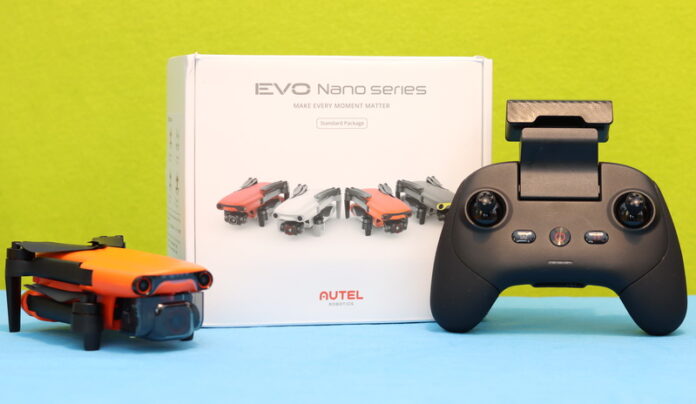
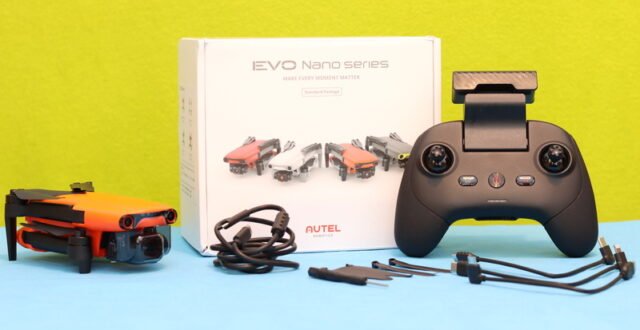
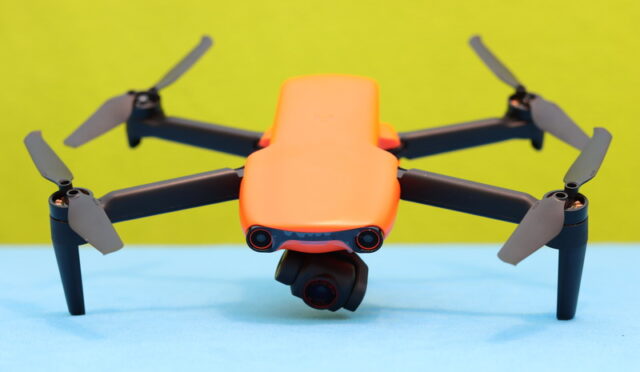
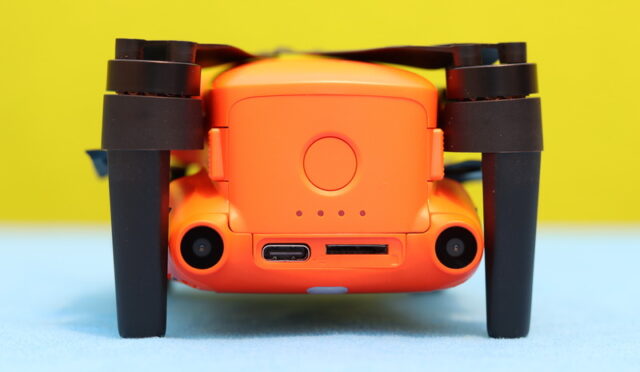
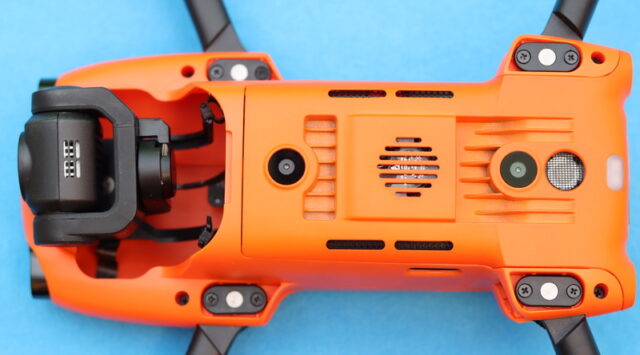
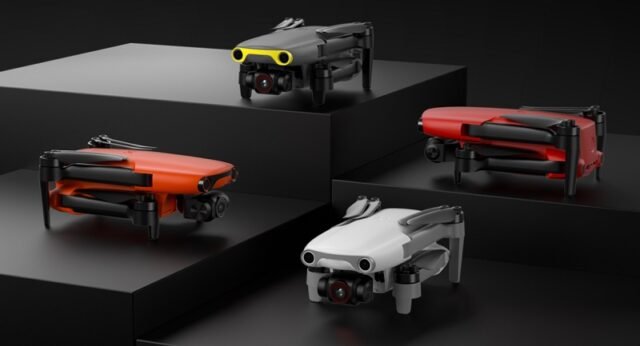
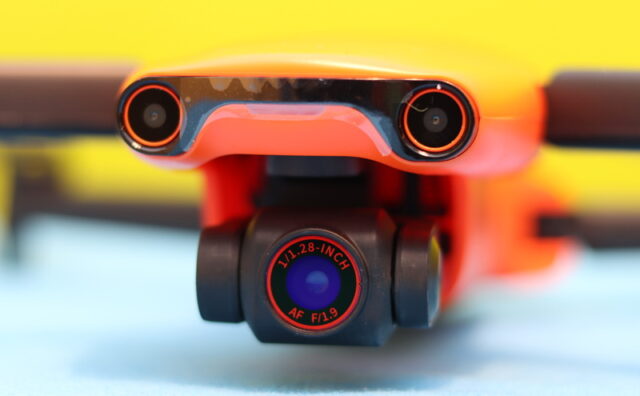
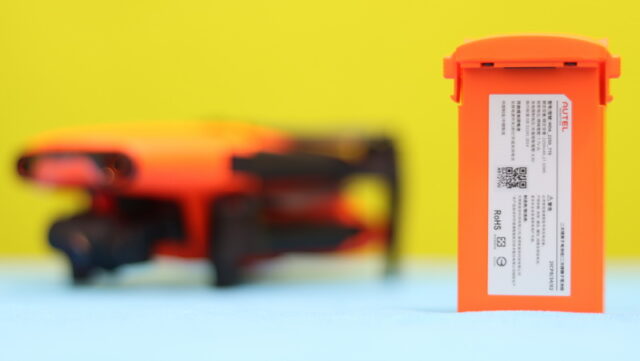
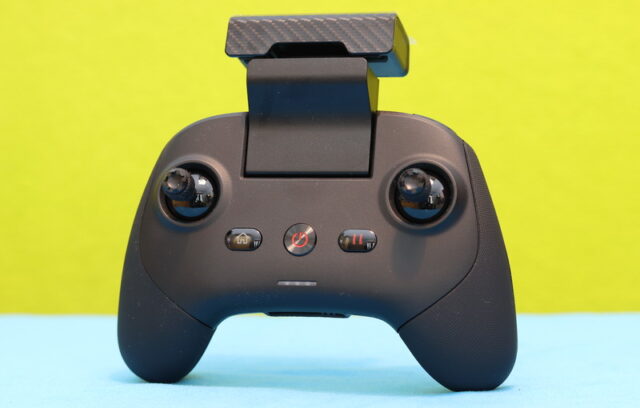
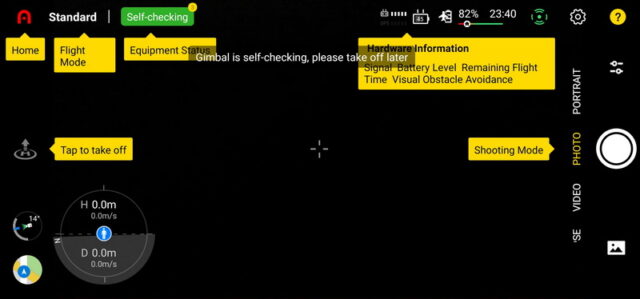
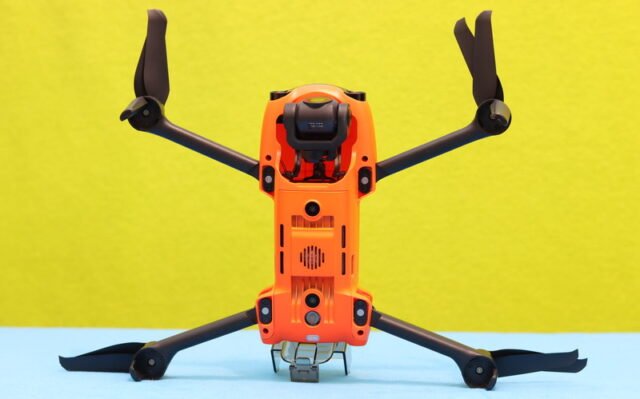
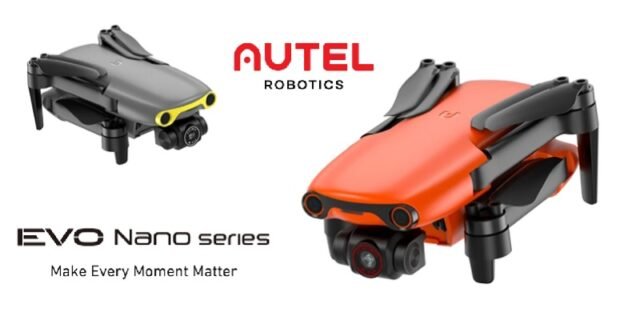
Are the night videos comparable to DJI mini 4 pro?
Yes, the Nano PLUS’ big sensor has an excellent low-light performance.
Great review! The Autel Nano Plus seems like an impressive option for those looking for a lightweight, feature-packed drone. The 1/1.28-inch CMOS sensor and f/1.9 aperture is a game-changer for low-light photography, and the 50 MP camera makes stunning image quality.
do you guys recommend the Autel NanoPlus? Thinking of getting my first drone and I know that the sub250g limit is so important
Autel EVO Nano Plus is, like most consumer drones, worthless garbage because it is a ‘Big Brother Drone’.
If it requires a phone and connectivity, or ANYTHING other than what is provided in the box when you open it, it’s crap. If it is required by law to be registered, it’s crap.
yeah due to drones design it doesn’t go very fast in high winds…Pano is slow and flight characteristics are bad.
however drone camera is excellent quality is high. I will say I’ve had drops or crashes and the unit has still flown after this!
This drone doesn’t hold up well to the slightest breeze. Once in the air, it is hard to control it against strong wind. I think this issue is with all 250g sub drones, not just with the Autel Nano
This drone is tiny! But the performance is not. It produces best images under 250grams, better than any DJI MINI! I’m not a Autel fanboy but this little thing impressed me from the first flight,
Great review and recommendations. I decided that I needed a sub250g drone in my flying camera arsenal :)
Happy Droning!
Got it for Xmas. I have yet to try it in low light, but so far it’s really nice.
Waiting for Autel to make the New Smart Controller SE available for the EVO Nano+
Has anyone tried to capture Christmas lights with the Nano Plus? Can it do good?
I bought the nano plus after reading your review, and I’m looking for some ND filters. Any suggestions?
thanks
Valdo
How can I use an iPad Mini (7.9″) on top of the Autel Controller?
The Autel NANO+ really is a fantastic piece of drone, and I’m always impressed by the camera on it
Are there any free third-party fly apps for the Autel EVO Nano? Such the Litchi?
Tomorrow I’ll get my Autel EVO Nano+. How are the anti-collision sensors work? I mean can I fly without worrying to collide with birds or any other things?
I need to sell or send back my EVO Nano. Autel never enabled the Active Tracking which was a selling point from me..
Hi, is there anyone who uses Samsung s22 Ultra with Autel Nano+? I don’t have a live view :(
Visitor Rating: 5 Stars
New firmware and still no AT :(. Any idea when they will have dynamic track on the Nano+? Thanks Merlin
Visitor Rating: 5 Stars
with the latest firmware, GPS coverage is much better and faster. Remember to perform IMU calibration after update
Fly safe, Have fun!
Alonzo
Visitor Rating: 4 Stars
If you’re getting a drone for tracking purposes primarily, I’d personally go with another brand/model. I read that Autel will add this feature to the EVO NANO only after this summer.
Visitor Rating: 5 Stars
Do they have fly away insurance?
Yes, Autel has such premium service for an extra cost.
Visitor Rating: 5 Stars
New firmware for EVO Nano series (V1.2.14 – Mar 28, 2022)
Changelog:
1. Added Features:
– Added HDR video support and log mode on EVO Nano+
– Added the Wi-Fi fast downloading
– Added the unlock No-Fly Zone application option in China
– Added the feature to upgrade battery firmware individually
2. Bug Fixes and Optimization:
– Optimized digital zoom performance to reduce the zoom response time and increase the smoothness
– Fxed the blinking issue in Panorama mode on EVO Nano+
Any update on active tracking? Still not activated?
Unfortunately, the visual tracking function still not working
Visitor Rating: 5 Stars
How to shoot in FLOG with the Autel Nano?
Does anyone know how to livestream to Facebook with the Autel Nano? I read that it can but can’t find out how to do it
Thanks!
The Nano+ just can’t handle windy conditions so I’m selling it :(
Visitor Rating: 2 Stars
Is it safe to charge the EVO Nano battery pack from car battery while on the field?
You can charge the batteries from your car cigarette lighter socket or a dedicated USB port, but never let unattended the process!!!
Great review as always! Safe airways!
Hi, I currently have DJI Mavic 2 Air and I’m considering the EVO Nano+…I just want to confirm that there is no GEO Fencing on the EVO Nano+ so I can launch from my house is 2 miles away from an airport. I purchase a DJI Mini last week ago and sent it back because their GEO Fencing will not allow me to launch at my home. So want to double-check before I purchase. Thanks in advance.
Hello all!
I was wondering what type of software could be used with the EVO Nano+ for 3D mapping.
Visitor Rating: 1 Stars
Can the Evo Nano Plus take 360 panorama photos?
Yes
I read that all Nanos are called back for repair. Did you were contacted Autel with the gimbal issue?
WTF, Autel increased their EVO Nano+ pricing by $150. Now $949 for the basic and $1099 for the premium bundle.
Visitor Rating: 4 Stars
Visitor Rating: 4 Stars
how does the anti-fog effect work? did you test it?
Visitor Rating: 1 Stars
same here :(
against wind, top speed is only 0.2-0.5 miles
this thing is supper slow :( hope that it will be fixed soon
RTH speed still not fixed!
thanks!
I received the EVO Nano + last week and I have to say I’m impressed! It is super stable and the camera is amazing. I’m a DJI pilot, but I have to admit that Autel did a great job.
Can be used the EVO Nano+ with the Autel Smart controller? I like that super bright display.
The Autel Smart controller is compatible only with EVO II Series, EVO II RTK Series, and EVO II Enterprise drones.
this is the full change log for the new firmware:
Nano/Nano+ Lite/Lite+ Firmware Update
NANO/NANO +1.1.7
LITE/LITE+ 1.1.4
Autel Sky App
iOS: 1.1.0
Android 1.1.5
New Features:
Added 24/25/48/50fps video shooting options
Added the display of an estimated number of photos remaining on the SD card and internal memory
Added 8192×6144 photo resolution on EVO Nano+, 8000×6000 photo resolution on EVO Nano
Added manual focus feature for EVO Lite+/Lite/Nano+
Added photo stamp feature (time and customized stamps, English app version only)
Added image transmission pillarbox blurring option
Added the camera parameter display at the lower right corner of the screen in Pro mode
Bug Fixes and Optimizations:
Optimized continuous zoom (tap and hold the zoom button to activate. For EVO Nano series, the zoom button will only be displayed after takeoff)
Optimized Image Transmission Mode display with instructions
Autel Robotics stands that the EVO Nano and Nano+ will enable 15m/s sport mode to achieve the advertised level 5 wind resistance via firmware update in the near future.
Seems like this quad is pretty good, but not something to justify the premium price. many features are only on paper….
Nano Plus has an outstanding camera, but battery life could be better for its price
There are ND filters for the EVO NANO series?
No filters are available!
Visitor Rating: 3 Stars
New Autel Evo Nano Plus firmware was released. Now Sport mode works at 15m/s. You should test it!
Visitor Rating: 3 Stars
How it is compared to the Hubsan ZINO MINI Pro? It looks like it promise similar features as the Autel EVO NANO+
Personally, I like more the EVO NANO+. The OS system works out of the box and everything seems to be more stable and trustworthy.
Visitor Rating: 5 Stars
Visitor Rating: 3 Stars
Do you have speed problems? All OA sensors are OFF in the high-speed mode?
All actual consumer drones, including the EVO Nano series, disables the obstacle avoidance (OA) sensors on sport mode!
Visitor Rating: 4 Stars
Visitor Rating: 4 Stars